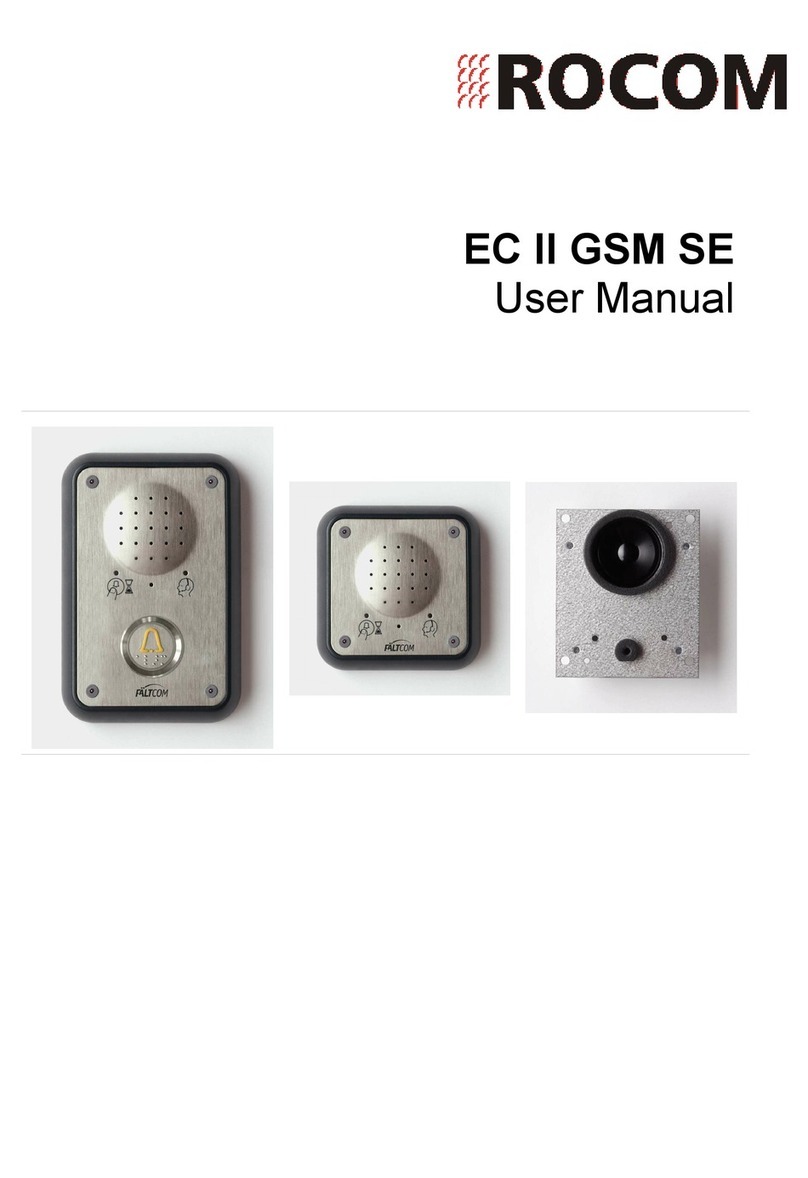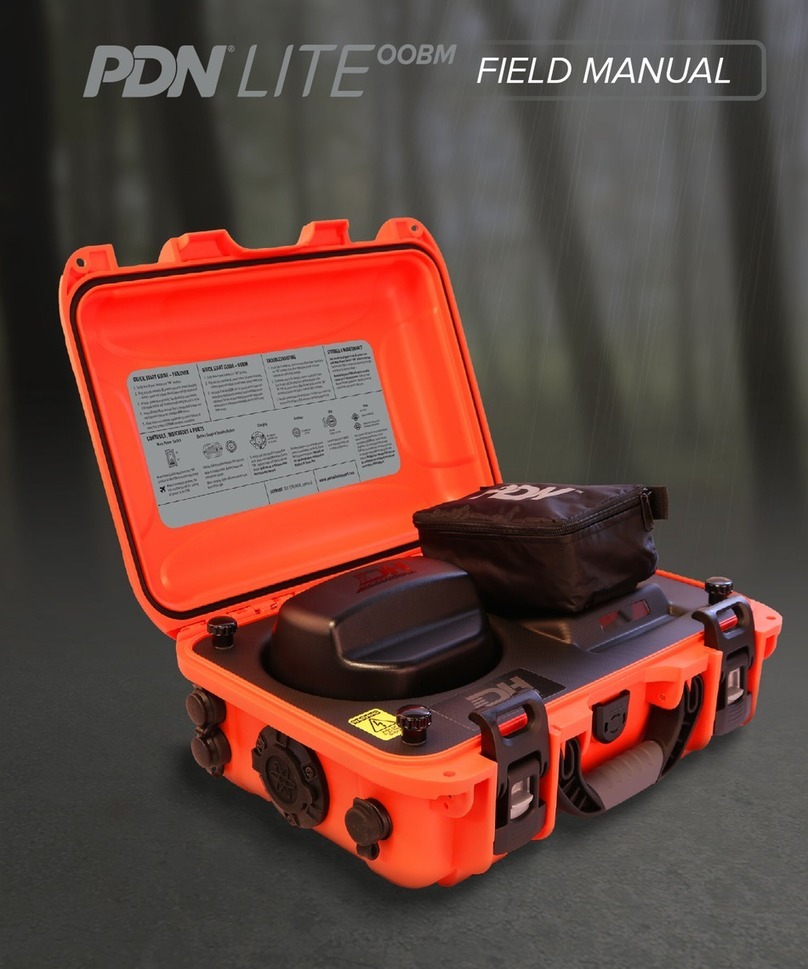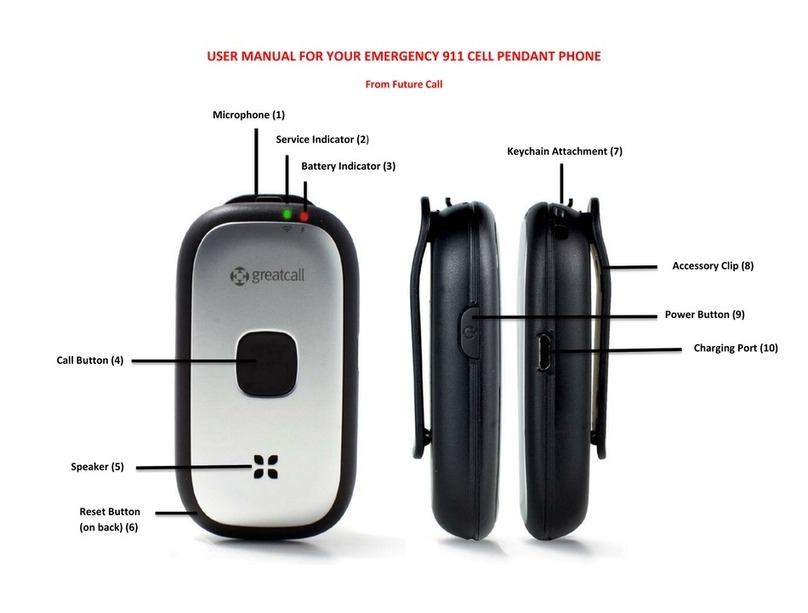Rocom HELPY GSM Instruction manual

Quick user guide Helpy GSM Issue 1.00
Page 1
Quick user guide
HELPY GSM
EN81.28 (2018) integrated
GSM lift emergency
call system

Quick user guide Helpy GSM Issue 1.00
Page 2
Content
Overview ...................................................................................................................................... 4
Installation place .......................................................................................................................... 4
Security advices............................................................................................................................ 5
Installation ................................................................................................................................... 6
SIM card installation .................................................................................................................... 6
GSM antenna ............................................................................................................................... 6
Connection of the external power supply..................................................................................... 6
Putting into service ...................................................................................................................... 7
Battery ......................................................................................................................................... 7
Reset button ................................................................................................................................ 7
Screw terminal block.................................................................................................................... 8
Connecting the emergency call button ........................................................................................ 9
General wiring diagram.............................................................................................................. 10
Programming ............................................................................................................................. 11
Enabling programming mode .................................................................................................... 11
Disabling programming mode ................................................................................................... 11
Telephone numbers .................................................................................................................... 12
Check the programmed telephon numbers................................................................................ 13
Recording identification message............................................................................................... 13
Delete identification message .................................................................................................... 13
Listen to the identification message........................................................................................... 13
ID code programming ................................................................................................................ 14
Check the programmed ID code................................................................................................. 14
Test call ...................................................................................................................................... 15
Check test call programming...................................................................................................... 15
Test alarms ................................................................................................................................. 15
Acknowledgement procedure .................................................................................................... 16
Check acknowledgement procedure .......................................................................................... 17
Speech connection ..................................................................................................................... 17
Check speech connection activation........................................................................................... 18
Relay function ............................................................................................................................ 18
Check relay function setting....................................................................................................... 19
Emergency button filtering ........................................................................................................ 20
Check emergency button filtering time ...................................................................................... 20
Time setting ............................................................................................................................... 20
Check internal clock time setting................................................................................................ 21
Date setting ............................................................................................................................... 21
Check actual date setting ........................................................................................................... 22
Volume setting........................................................................................................................... 22
Check the volume setting........................................................................................................... 23
Change the password ................................................................................................................ 23
Change language ....................................................................................................................... 23
Second and third tranquillization message ................................................................................ 24
Emergency call button ............................................................................................................... 25
Programming using a SD micro memory card ............................................................................ 25
Reset to factory default.............................................................................................................. 25
HOW TO USE (alarm call receiving)............................................................................................. 26

Quick user guide Helpy GSM Issue 1.00
Page 3
Alarm call to a alarm receiver (ESSETI, P100).............................................................................. 26
Alarm call to a normal phone (DTMF) ........................................................................................ 26
Driver contact............................................................................................................................. 27
Ending the alarm........................................................................................................................ 28
Optical indicators ....................................................................................................................... 29
Green LED for GSM signal strength............................................................................................ 29
Red LED for device status ........................................................................................................... 29
Yellow LED for alarm status........................................................................................................ 29
Blue LED for the power supply ................................................................................................... 29
Technical data ............................................................................................................................ 30
Your notes.................................................................................................................................. 31

Quick user guide Helpy GSM Issue 1.00
Page 4
Overview
Helpy GSM open case
A Internal power-supply connector
B Built-in backup battery connector
C Antenna cable connector
D Reset pushbutton
E Alarm pushbutton
F SIM Card slot with front panel
G Built-in loudspeaker connector
H Serial port for PC connection
I Micro SD Card slot
L RJ11 connector for local telephone
M Battery compartment door
N Terminal blocks
O Built-in microphone
Installation place
The installation place for the device must be:
- inside a dry room;
- free from dust, heat and direct sun radiation;
- free from liquids and chemical aggressive substances.
Before the installation please follow these advices:
- The device must be powered only using the voltage as indicated in the type lable.
- If a liquid gets into the device please disconnet immediatly the device from the
power supply. The device can be repaired only by qualified personnel.

Quick user guide Helpy GSM Issue 1.00
Page 5
Security advices
Please read carefully this user guide before you install the device. Follow all security
advices. Not following the rules may be against existing law or cause dangerous
situations.
Helpy GSM is a low power radio transmission device, when it is powered it will send
and receive radio waves.
The device generates a magnetic field and must be used away from magnetic media
(like discs, tapes, and similar).
The use of the device near to electrical of electronical devices like radio, TV, phone-
sand PC may generate disturbances.
Radio disturbances
As any other wireless device Helpy GMS may be disturbed by radio waves.
Use in a car
Do not use the device while driving. If you plan to use the device in a car please
ensure that all installed device are protected against radio disturbances. Never use or
install the device near to an airbag or within the action radius of an airbag.
Use in a airplan
In an airplan Helpy GSM must be switched off. The use of GSM device in an airplan
is forbidden by law.
Use within an hospital
Switch Helpy GSM off if you are close to any electromedical apparature.
Please take care that disturbances may affect the use of cardiological and acoustical
devices. As Helpy GSM ist not a mobile device it is not intended for a use in con-
tact with human body. The use of the device within an hospital or any other health
facility is only possible if the security advices are followed with the highest attention.
Wherever the use of GSM devices is forbidden also the use and the installation of a
Helpy GSM is not permitted.
Use close to explosive material
Helpy GSM may not be used or installed within fuel depots, chemical facilities or
within areas where explosive gas is present or used. The installation and use of this
device within such enviroments can be done only following the highest security
advices.
Usage
Do not use Helpy GSM in contact with human body. Do not touch the antenna during
opertation if not specifically required. Use only original and approved spare parts.
- Static discharges may damage the device. Please ensure that you are staticaly
discharged using a power grounding before handling the device.

Quick user guide Helpy GSM Issue 1.00
Page 6
Installation
Ensure that at the installation location a power plug in available nearby. For the wall
installation you can use the screws delivered with the unit.
It is very important that the Helpy GSM unit has all time the best GSM signal to
avoid disturbances during operation time. Before you install the device at his final
position be sure that it is the best spot you can find. To do this use an mobile phone
with a SIM card of the same provider that you are going to use with the Helpy GSM
and try at the spot you are going to use to setup a communication. If during the
conversation you will notice disturbances or interruptions you will have to look for a
better position.
SIM card installation
For the installation of the SIM card be sure that the devices is SWITCHED OFF! The
SIM card has to be placed into the specific slot. The card should have the PIN code
disabled.
PLEASE NOTE!
If you change the SIM card switch all time the POWER OFF!
Ensure that the PIN code of the SIM card is disabled with a mobile phone BE-
FORE you install it into the device.
If the SIM card is changed ensure that the new card has the PIN code is
disabled.
For a proper maintenance of the device you need a SIM card with SMS and
GPRS data volume. SMS is required for programming and data volume for firm-
ware updates. For data connectivity ensure that you have the APN user name
and password available from your provider.
GSM antenna
The antenna provided is connected to the device with the proper connector outside
the case. If you notice problems in getting a proper GSM network signal you may
change the antenna. Specific antennas may solve the problem. Ask the technical
support for more informations,
PLEASE NOTE!
Never power the Helpy GSM WITHOUT connected antenna. The radio transmis-
sion engine may be damaged.
The device is designed for statical installation and external power supply with 230
VAC. If required also a 12 VDC (min 11, max. 15 VDC) power voltage can be used.
The device has an internal NiMH battery for emergency power supply if external
power is missing.
Connection of the external power supply

Quick user guide Helpy GSM Issue 1.00
Page 7
The external power supply and battery status is show by the blue LED (see also LED
indicators).
PLEASE NOTE!
While you are handling with the 230 VAC power be aware to fullfill all national
and international security standards as required.
If you need to switch off the device it is not enough to unplug the external
power supply unit, as in this case it will be still powered by the internal battery.
To complete switch off the unit you have to unplug the external PSU and the
Reset button
The reset button has two different functions:
Short activation
The actual alarm will be resetted.
Long activation (10 seconds)
The system will be complete resetted and restarted. All programmed data will not be
deleted.
Putting into service
After connection of the external power supply the device will first check the SIM
card. If no card has been installed, or if it is broken or cann't be recognized by
the unit, the red LED will start to flash quickly. In this case the SIM card has to be
changed.
If everything is OK the device will start the initialisation procedure and login to the
provider. This can take some time about 30 to 60 seconds. During this time the red
LED will flash quickly. After succesful login the red LED will flash slowly.
Battery
The bulid in NiMH battery is continously tested by the Helpy GSM. If it will dein-
stalled or fail the device will rise an appropiate alarm. The first time this procedure
will take place 6 hours after first activation. During the procedure the battery will
be discharged over a load for several hours. If after the test the battery capacity will
be below a defined level an appropiate alarm is rised. The discharging test will not
take place or will be interrupted if the device is missing the external power supply.
Furthermore the battery is protected against deep discharge. The battery should
be changed anyway all 2 to 4 years depending on the installation enviroment and
usage. In case of substitution only the same or a equivalent battery must be used to
avoid damage on the product.
PLEASE NOTE!
The battery should be changes in any case after 7 years.

Quick user guide Helpy GSM Issue 1.00
Page 8
Screw terminal block
Name Description
+ POWER SUPPLY INPUT (11-15VDC)(+)
- POWER SUPPLY INPUT (11-15VDC)(-)
AIP GIVEN ALARM INDICATOR LIGHT (output: 12VDC)
ARP RECEIVED ALARM INDICATOR LIGHT (output: 12VDC)
+12 12VDC OUTPUT (max. 100mA)
C COMMON TERMINAL FOR INPUT ALC
- NEGATIVE POLE
ALC ALARM INPUT FOR THE ELEVATOR CAR
ALY ALARM INPUT FOR THE PIT
IN1 FILTER INPUT
ALT2 OUTPUT FOR CONNECTING THE LOUDSPEAKER OF A PASSIVE SPEAKER
UNIT
MIC2 INPUT FOR CONNECTING THE MICROPHONE OF A PASSIVE SPEAKER UNIT
OR A SINGLE MICROPHONE
MIC3 INPUT FOR CONNECTING THE MICROPHONE OF A PASSIVE SPEAKER UNIT
OR A SINGLE MICROPHONE
- NEGATIVE POLE
TEL LOCAL TELEPHONE
RL1 RELAY
RL2 RELAY
VVX OUTPUT FOR CONNECTING AN ADDITIONAL ACTIVE SPEAKER UNIT
VVY OUTPUT FOR CONNECTING THE PIT ACTIVE SPEAKER UNIT
ALZ ADDITIONAL ALARM INPUT(4) OR AUXILIARY INPUT
AIN GIVEN ALARM INDICATOR LIGHT (output: 0VDC)
ARN RECEIVED ALARM INDICATOR LIGHT (output: 0VDC)
- NEGATIVE POLE
C1 COMMON TERMINAL FOR INPUT IN1(2)
Helpy GSM description of the terminal block

Quick user guide Helpy GSM Issue 1.00
Page 9
Connecting the emergency call button
Powerless button with
plain contact
Existing button
Siren
Negative pole
+12 to 24 Vdc
Helpy GSM connecting an powerless alarm button (normal closed or normal open)
Helpy GSM connecting an existing alarm button (normal open)

Quick user guide Helpy GSM Issue 1.00
Page 10
General wiring diagram
Helpy GSM general wiring diagram
HELPY GSM (cabin top or machine room)
Machine room
intercom
Lift cabin
Pictogram yellow
Pictogram green
Emergency button
Microphone
or
passive speaker unti
Pit
Active speaker unit

Quick user guide Helpy GSM Issue 1.00
Page 11
Programming
Programming can be done using a standard analogue phone with DMTF dial, or
using SMS, an USB cable conneted to a PC or using a SD card. For the programming
using SMS, PC and SD card a programming tool ("Estant") ist available (www.rocom-
gmbh.de for the download).
PLEASE NOTE!
During a programming sequence no more then 10 seconds waiting time betw-
wen two digits are allowed. After this time you get a warn tone and you must
hang up.
This quick guide is only a short description of the most important programma-
tions. The complete overview can only be found in the Estant programming
tool.
Enabling programming mode
To enable the programming mode using a DTMF phone please dial:
DTMF
*<password (default "0")>#
DTMF example (default)
*0#
PLEASE NOTE!
If programming mode is active no outside calls will be answered
Disabling programming mode
To deactivate the programming mode:
DTMF
*<password (default "0")>#
DTMF example (default)
*0#
PLEASE NOTE!
With the same procedure also an activ alarm can be cancelled.

Quick user guide Helpy GSM Issue 1.00
Page 12
Telephone numbers
It is possible to program up to 12 differen telephone numbers for emergency calls,
test calls and technical alarms. For each number a specific alarm receiving protocol
can be defined. Each number can be 20 digits long.
DTMF
21<position><type><protocol><number>#
SMS
Et.hg *<password (default "0")># <position><type><protokol><number>#
Where:
<position> a value between 01 and 12 is to define which positon 1 to 12
you want to program.
<type> can have the following values:
• 1 for speech emergency call
• 2 for battery alarm*
• 3 for test call*
• 5 for SIM card expiring alarm
• 6 for diagnostic alarm* (microphone/loudspeaker failure)
• 7 for power failure
• 8 for general technical alarm
• 9 for end of alarm
<protocol> can have the following values:
• 2 for DTMF phone (call handling using a DTMF phone)
• 3 for Esseti protocol
• 4 for CLIP call (call without answer, only for technical alarms)
• 5 for SMS
• 6 for P100 protocol
<number> the telephone number of the called party (max. 20 digits).
* Programming a telephone number with this alarm type will enable automaticallly this type of alarm.
Example
You want to program two receiver for emergency and test call to the telephone
number 06106660055 using the P100 alarm call receiving protocol:
DTMF
21011606106660055#
21023606106660055#

Quick user guide Helpy GSM Issue 1.00
Page 13
SMS (with default password)
Et.hg *0# 21011606106660055# 21013606106660055#
PLEASE NOTE!
For the alarm type "speech emergency call" the CLIP protocol cann't be selected
as it doesn't have a speech connection. Of course you can use the SMS protcol
to send an alarm information, but this has to be send before the emergnecy
You can check the programmed telephone number by dialing:
DTMF
21<position>*
SMS
Et.hg *<password (default "0")># <position>*
Recording identification message
Check the programmed telephon numbers
If an emergency or technical alarm call is sent to a normal phone instead of a proper
call center you can identify te calling lift using its own telephone number and an
identification message. This message can be heard with both incoming and out-
going calls.
DTMF
7101 "Record identification message (max. 1 minute)" #0
SMS
NOT AVAILABLE
Delete identification message
To delete the identification message:
DTMF
7401
SMS
Et.hg *<password (default "0")># 7301*
Listen to the identification message
You can hear teh recorded identification message by dialing:
DTMF

Quick user guide Helpy GSM Issue 1.00
Page 14
ID code programming
If the emergency call. or also a technical alarm, has to be sent to a call center equip-
ped with Esseti or P100 alarm reciever an ID code must be programmed to indentify
the calling lift.
DTMF
222<ESSETI ID code always 10 digits long>#
223<P100 ID code always 8 digits long>#
SMS
Et.hg *<password (default "0")># 222<ESSETI ID code always 10 digits long>#
Et.hg *<password (default "0")># 222<P100 ID code always 8 digits long>#
Example
You want to program a Sie P100 ID code (12345678):
DMTF
22312345678#
SMS (with default password)
Et.hg *0# 22312345678#
7201
SMS
NOT AVAILABLE
Check the programmed ID code
You can check the programmed ID code by dialing:
DTMF
222* (ESSETI ID code)
223* (P100 ID code)
SMS
Et.hg *<password (default "0")># 222* (ESSETI ID Code)
Et.hg *<password (default "0")># 223* (P100 ID Code)

Quick user guide Helpy GSM Issue 1.00
Page 15
As defalut the test call is set to be send every 3 days at 4:00 am. You can change this
values:
DTMF
31<days between test calls 1- 9>
32<daytime HHMM; von 0000 bis 2359> (24 h mode)
SMS
Et.hg *<password (default "0")># 31<days between test calls 1- 9>
Et.hg *<password (default "0")># 32<Tageszeit SSMM; von 0000 bis 2359>
Example
You to send a test call every day at 2:00 am:
DTMF
311
320200
SMS (with default password)
Et.hg *0# 311 320200
PLEASE NOTE!
The test call is activated only after you have programmed a proper telephone
number for the receiver (see also Telephone numbers)
Check test call programming
You can check the programmed test call settings by dialing:
DTMF
31* (days)
32* (hour)
SMS
Et.hg *<password (default "0")># 31* (days)
Et.hg *<password (default "0")># 32* (hour)
Test call
Test alarms
You can test the single programmed test and alarm calls by dialing
DTMF
90099 <type>

Quick user guide Helpy GSM Issue 1.00
Page 16
Acknowledgement procedure
If an emergency call is send to a normal phone and not to a call center you can do
this with or without adn acknowledgement procedure. If the acknowledgement
procedure is active the call is fully terminated only after receiving the digit 0 (call
end). That means that only afterwards the call sequence will be terminated. Without
an acknowledment procedure the call is terminated just hanging up the phone.
Further it is possible to force the emergency call termination only using a local pro-
cedure at the device after the liberation has been done (as required by the EN81.28
(2018) specification). See also Ending an alarm call.
PLEASE NOTE!
The Helpy GSM emergency phone works digital. That means that on the con-
trary to pure analogue solutions the emergency phone knows always when the
called party will answer and close the call. In this way it is possible to manage
an emergency call to more telephone numbers also with a deactivated acknow-
ledgement procedure. But an enabled acknowledgment procedure will ensure
that the call is not lost also if it will reach an answering machine or similar
devices. An operation conform to the EN81.28 specification without an active
acknowledgement procedure is only possible if it ensured that the device
cann't reach any automatic answering machine.
As default the acknowledgement procedure is activated. To deactive it dial:
DTMF
770
SMS
Et.hg *<password (default "0")># 770
SMS
Et.hg *<password (default "0")># 90099<type>
Where <type> can have the following values:
• 1 for speech emergency call
• 2 for battery alarm
• 3 for test call
• 5 for SIM card expiring alarm
• 6 for diagnostic alarm
• 7 for power failure
• 8 for general technical alarm
• 9 for end of alarm

Quick user guide Helpy GSM Issue 1.00
Page 17
To reactivate the acknowledgmente procedure:
DTMF
771
SMS
Et.hg *<password (default "0")># 771
To activate the acknowledgement procedure with local deactivation:
DTMF
772
SMS
Et.hg *<password (default "0")># 772
Check acknowledgement procedure
You can check the programmed acknowledgement procedure settings by dialing:
DTMF
77*
SMS
Et.hg *<password (default "0")># 77*
Speech connection
You can define when a speech connection must be established (microphone activati-
on) after a call answer.
- Only after sending the acknowledgement digit 4
- Automatically after hearing the identification message
- Immediately after the call is activate
As default the speech connection will be activated after sending the acknowledeg-
mente digit 4 . To change this please dial:
DTMF
Automatically after identification message
781
Immediately after call activation
782

Quick user guide Helpy GSM Issue 1.00
Page 18
Check speech connection activation
You can check the programmed speech connection activation settings by dialing:
DTMF
78*
SMS
Et.hg *<password (default "0")># 78*
Relay function
Helpy GSM has a programmable relay for different functions:
- Relay follows the yellow indicator (emergency call activated)
- Relay follows the green indicator (emergency call has been answered)
- Power failure (after 30 seconds)
- Driver contact (activation time 2 seconds)
- Emergency/alarm call is active
- Emergency call button is pressed (siren driver)
- GSM network failure (default)
As default the relay is used to signal a GSM network failure (i.e. to switch off the lift
in case of missing emegency call capability. To change the relay function:
DTMF
Relay follows the yellow indicator (emergency call activated)
7511
Relay follows the green indicator (emergency call has been answered)
7512
Power failure (after 30 seconds)
SMS
Automatically after identification message
Et.hg *<password (default "0")># 781
Immediately after call activation
Et.hg *<password (default "0")># 782
To set back to default setting:
DTMF
780
SMS
Et.hg *<password (default "0")># 770

Quick user guide Helpy GSM Issue 1.00
Page 19
7513
Driver contact (activation time 2 seconds)
7514
Emergency/alarm call is active
7515
Emergency call button is pressed (siren driver)
7516
SMS
Relay follows the yellow indicator (emergency call activated)
Et.hg *<password (default "0")># 7511
Relay follows the green indicator (emergency call has been answered)
Et.hg *<password (default "0")># 7512
Power failure (after 30 seconds)
Et.hg *<password (default "0")># 7513
Driver contact (activation time 2 seconds)
Et.hg *<password (default "0")># 7514
mergency/alarm call is active
Et.hg *<password (default "0")># 7515
Emergency call button is pressed (siren driver)
Et.hg *<password (default "0")># 7516
To set back to default setting:
DTMF
7517
SMS
Et.hg *<password (default "0")># 7517
Check relay function setting
You can check the programmed relay function settings by dialing:
DTMF
751*
SMS
Et.hg *<password (default "0")># 751*

Quick user guide Helpy GSM Issue 1.00
Page 20
Emergency button filtering
To avoid unneeded emergency calls the emergency call button is filtered. That
means you have to press the button a specifc time long before the alarm call will be
activated As default this time ist set to 5 seconds. To change this time:
DTMF
42<Filtering time for emergency call button 2 to 9 seconds>
SMS
Et.hg *<password (default "0")># 42<Filtering time for emergency call button 2 to
9 seconds>
Time setting
To ensure that the test call will be send at the required hour the real time clock
inside the device must be set to the proper time.
DTMF
35<actual time HHMM 24 h time format>
SMS
Et.hg *<password (default "0")># 35<actual time HHMM 24 h time format>
Example
You want to set the time at 5:30 pm:
DTMF
351730
SMS
Et.hg *<password (default "0")># 351730
Check emergency button filtering time
You can check the programmed emergency button filtering time settings by dialing:
DTMF
42*
SMS
Et.hg *<password (default "0")># 42*
Table of contents
Other Rocom Emergency Phone manuals
Popular Emergency Phone manuals by other brands
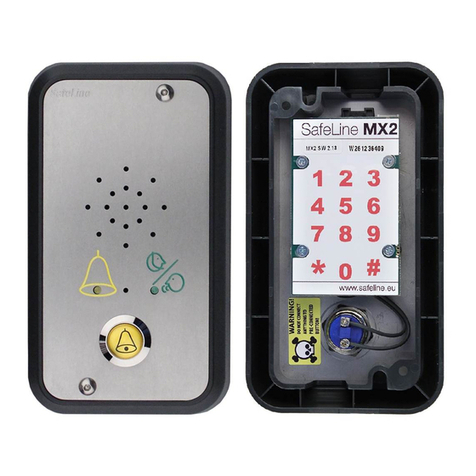
Safeline
Safeline MX2 installation manual
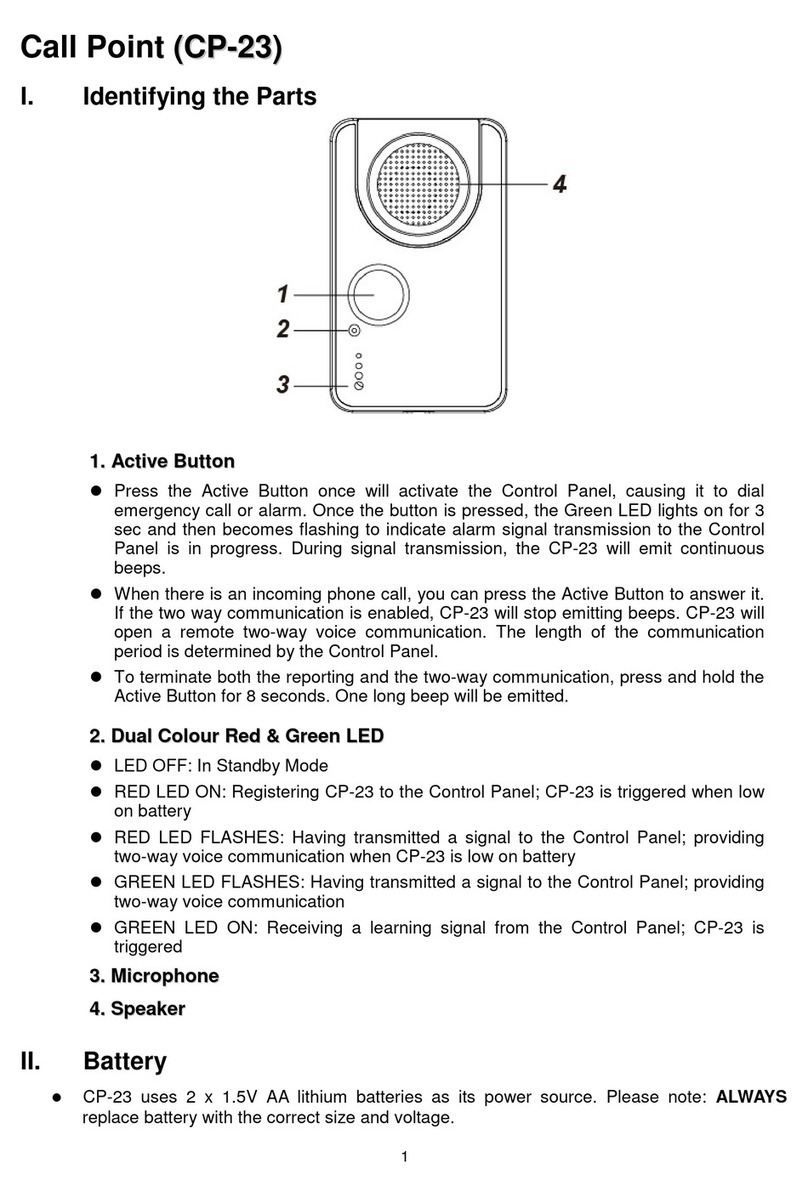
Climax
Climax Call Point CP-23 user manual

Simplex
Simplex 2084-9002 installation instructions

SecurUS
SecurUS eCare+voice quick start guide

Guardian Safety Pendants
Guardian Safety Pendants MediFone Quick start user guide

Pro-tec
Pro-tec EVX-228 USER MANUAL, CERTIFICATES AND LOG BOOK
